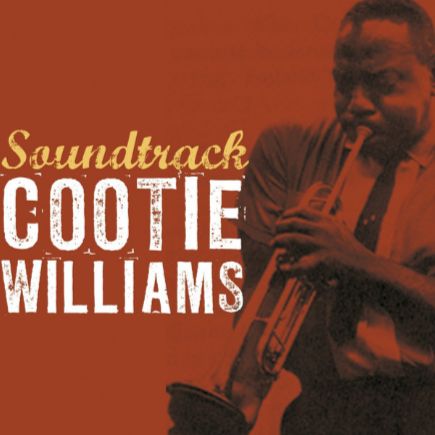‘Round Midnight: l’intimité du jazz moderne
Composée par Thelonious Monk au début des années 1940, ‘Round Midnight s’impose comme l’une des ballades les plus marquantes et les plus interprétées du répertoire jazz. Dès l’introduction, elle installe une ambiance nocturne, à la fois méditative et chargée d’émotion, où se croisent mélancolie et raffinement harmonique.
La ligne mélodique, sinueuse et nuancée, explore des trajectoires inattendues, portées par une architecture harmonique élaborée. Des arrangeurs tels que Cootie Williams ou Bernie Hanighen ont contribué à son évolution, ce dernier ayant notamment participé à l’édition de la version chantée de ‘Round Midnight, qui facilita sa diffusion dès les années 1940.
L’interprétation de Miles Davis au festival de Newport en 1955, dans un arrangement de Gil Evans, fut déterminante: elle joua un rôle clé dans la signature du trompettiste chez Columbia et conféra au morceau une reconnaissance internationale. Depuis, ‘Round Midnight a été repris à travers une diversité de styles et d’approches.
Le titre, évocateur, résume à lui seul l’essence du morceau: une immersion dans l’intimité de la nuit, empreinte de tension dramatique et d’élégance sombre, alors que la complexité harmonique, fondée sur des enchaînements d’accords subtils, offre un terrain riche pour l’improvisation, tout en conservant l’identité poignante du thème.
Ici, l’interprétation de « ‘Round Midnight » enregistrée à New York le 22 août 1944 par le trompettiste « Cootie » Williams et son orchestre. Cet enregistrement, réalisé avec son orchestre, marque la toute première diffusion publique de cette composition emblématique de Thelonious Monk, qui n’avait alors été joué que dans des cercles privés ou lors de performances en club.
Ce moment n’est pas seulement une étape dans l’évolution du morceau, mais un jalon dans l’histoire du jazz, où la mélancolie et la profondeur de Monk trouvent une voix à travers la chaleur et l’intensité de Williams. C’est grâce à cet enregistrement que « ‘Round Midnight » a gagné en notoriété, devenant peu à peu un standard incontournable du répertoire jazz. Monk lui-même a reconnu l’importance de cette version, qui a contribué à populariser son travail à une époque où il était encore peu connu du grand public.
Williams, issu de la tradition swing, adopte ici un rôle de pont entre les époques: il introduit le génie de Monk à un public plus large, à une époque où le bebop commençait tout juste à remodeler le paysage du jazz. L’arrangement de cette version de « ‘Round Midnight » s’éloigne de l’approche minimaliste et anguleuse que Monk privilégiera dans ses enregistrements ultérieurs.
Williams choisit un format plus accessible, intégrant une section de cuivres riche et des lignes mélodiques fluides. La trompette de Cootie Williams occupe une place centrale, portant la mélodie avec un ton chaleureux et émouvant. Ses attaques délicates et ses inflexions bluesy soulignent les contours mélancoliques du thème, tout en apportant une dimension émotionnelle qui prépare le terrain pour les interprétations futures.
L’orchestre qui accompagne Williams renforce cette vision. La section rythmique maintient une pulsation douce, presque hypnotique, tandis que les cuivres tissent un arrière-plan harmonique qui enrichit le morceau sans l’alourdir.
‘Round Midnight: la intimidad del jazz moderno
Compuesta por Thelonious Monk a principios de los años cuarenta, ‘Round Midnight se impone como una de las baladas más significativas y versionadas del repertorio jazzístico. Desde los primeros compases, establece una atmósfera nocturna, meditativa y cargada de emoción, donde se entrelazan melancolía y refinamiento armónico.
La línea melódica, sinuosa y matizada, recorre trayectorias inesperadas, sostenida por una arquitectura armónica sofisticada. Arreglistas como Cootie Williams y Bernie Hanighen contribuyeron a su evolución; este último participó especialmente en la publicación de la versión cantada de ‘Round Midnight, que favoreció su difusión ya en los años cuarenta.
La interpretación de Miles Davis en el festival de Newport de 1955, arreglada por Gil Evans, fue determinante: desempeñó un papel decisivo en su fichaje por Columbia y dio al tema una proyección internacional. Desde entonces, ‘Round Midnight ha sido interpretada desde una amplia gama de estilos y enfoques.
El título, evocador, resume por sí solo la esencia de la obra: una inmersión en la intimidad de la noche, marcada por una tensión dramática y una elegancia sombría. La complejidad armónica, basada en secuencias de acordes sutiles, ofrece un terreno fértil para la improvisación, sin perder la intensidad expresiva del tema original.
Aquí, la interpretación de « ‘Round Midnight » grabada en Nueva York el 22 de agosto de 1944 por el trompetista « Cootie » Williams y su orquesta. Esta grabación, realizada con su orquesta, marca la primera difusión pública de esta emblemática composición de Thelonious Monk, que hasta entonces solo se había tocado en círculos privados o en actuaciones en clubes.
Este momento no es solo un paso en la evolución del tema, sino un hito en la historia del jazz, donde la melancolía y la profundidad de Monk encuentran una voz a través del calor y la intensidad de Williams. Es gracias a esta grabación que « ‘Round Midnight » ganó notoriedad, convirtiéndose poco a poco en un estándar imprescindible del repertorio jazzístico. El propio Monk reconoció la importancia de esta versión, que ayudó a popularizar su trabajo en una época en la que todavía era poco conocido por el público general.
Williams, proveniente de la tradición swing, aquí adopta un papel de puente entre épocas: introduce el genio de Monk a un público más amplio, en un momento en que el bebop apenas comenzaba a remodelar el panorama del jazz. El arreglo de esta versión de « ‘Round Midnight » se aleja del enfoque minimalista y anguloso que Monk privilegiaría en grabaciones posteriores.
Williams opta por un formato más accesible, integrando una rica sección de metales y líneas melódicas fluidas. La trompeta de Cootie Williams ocupa un lugar central, llevando la melodía con un tono cálido y emotivo. Sus ataques delicados y sus inflexiones bluesy resaltan los contornos melancólicos del tema, aportando además una dimensión emocional que prepara el terreno para futuras interpretaciones.
La orquesta que acompaña a Williams refuerza esta visión. La sección rítmica mantiene una pulsación suave, casi hipnótica, mientras los metales tejen un fondo armónico que enriquece la pieza sin sobrecargarla.
‘Round Midnight: l’intimità del jazz moderno
Composta da Thelonious Monk all’inizio degli anni Quaranta, ‘Round Midnight si afferma come una delle ballate più significative e reinterpretate del repertorio jazz. Fin dall’introduzione, crea un’atmosfera notturna, meditativa e profondamente emotiva, in cui si fondono malinconia e raffinatezza armonica.
La linea melodica, sinuosa e sfumata, percorre direzioni imprevedibili, sostenuta da una struttura armonica ricercata. Arrangiatori come Cootie Williams e Bernie Hanighen hanno contribuito alla sua evoluzione; quest’ultimo ha partecipato in particolare alla pubblicazione della versione cantata di ‘Round Midnight, che ne favorì la diffusione già dagli anni Quaranta.
L’interpretazione di Miles Davis al festival di Newport nel 1955, su arrangiamento di Gil Evans, fu determinante: giocò un ruolo decisivo nella firma del trombettista con Columbia e offrì al brano un riconoscimento internazionale. Da allora, ‘Round Midnight è stata riproposta in una vasta gamma di stili e approcci.
Il titolo, altamente evocativo, riassume l’essenza stessa del brano: un’immersione nell’intimità della notte, segnata da tensione drammatica ed eleganza oscura. La complessità armonica, costruita su progressioni di accordi sottili, costituisce un terreno ricco per l’improvvisazione, pur mantenendo l’intensità espressiva del tema.
Qui, l’interpretazione di « ‘Round Midnight » registrata a New York il 22 agosto 1944 dal trombettista « Cootie » Williams e la sua orchestra. Questa registrazione, realizzata con la sua orchestra, segna la prima diffusione pubblica di questa iconica composizione di Thelonious Monk, che fino ad allora era stata suonata solo in contesti privati o durante esibizioni nei club.
Questo momento non rappresenta solo un passo nell’evoluzione del brano, ma anche una pietra miliare nella storia del jazz, dove la malinconia e la profondità di Monk trovano voce attraverso il calore e l’intensità di Williams. Grazie a questa registrazione, « ‘Round Midnight » ha acquisito notorietà, diventando gradualmente un classico imprescindibile del repertorio jazz. Lo stesso Monk ha riconosciuto l’importanza di questa versione, che ha contribuito a far conoscere il suo lavoro in un’epoca in cui era ancora poco noto al grande pubblico.
Williams, proveniente dalla tradizione swing, qui assume il ruolo di ponte tra epoche: introduce il genio di Monk a un pubblico più ampio, in un momento in cui il bebop stava appena iniziando a ridefinire il panorama del jazz. L’arrangiamento di questa versione di « ‘Round Midnight » si discosta dall’approccio minimalista e angolare che Monk avrebbe preferito nelle registrazioni successive.
Williams sceglie un formato più accessibile, integrando una sezione di ottoni ricca e linee melodiche fluide. La tromba di Cootie Williams occupa un ruolo centrale, portando la melodia con un tono caldo ed emozionante. I suoi attacchi delicati e le sue inflessioni blues sottolineano i contorni malinconici del tema, aggiungendo una dimensione emotiva che prepara il terreno per le interpretazioni future.
L’orchestra che accompagna Williams rafforza questa visione. La sezione ritmica mantiene una pulsazione morbida, quasi ipnotica, mentre gli ottoni creano uno sfondo armonico che arricchisce il brano senza appesantirlo.
‘Round Midnight: the intimacy of modern jazz
Composed by Thelonious Monk in the early 1940s, ‘Round Midnight stands as one of the most iconic and frequently interpreted ballads in the jazz repertoire. From the opening bars, it sets a nocturnal mood that is both meditative and emotionally charged, blending melancholy with harmonic sophistication.
The melodic line, winding and nuanced, follows unexpected paths supported by a refined harmonic framework. Arrangers like Cootie Williams and Bernie Hanighen contributed to its development; the latter notably helped publish the vocal version of ‘Round Midnight, which facilitated its dissemination in the 1940s.
Miles Davis’s performance at the Newport Jazz Festival in 1955, arranged by Gil Evans, proved pivotal: it played a key role in his signing with Columbia and brought the piece worldwide recognition. Since then, ‘Round Midnight has been revisited through a wide variety of styles and interpretations.
The evocative title alone captures the spirit of the composition: an immersion into the intimacy of night, marked by dramatic tension and somber elegance. Its harmonic complexity, built on subtle chord progressions, offers fertile ground for improvisation while preserving the poignant identity of the theme.
Here is the interpretation of « ‘Round Midnight » recorded in New York on August 22, 1944, by trumpeter « Cootie » Williams and his orchestra. This recording, made with his orchestra, marks the very first public introduction of this iconic composition by Thelonious Monk, which had until then been performed only in private settings or club shows.
This moment is not just a step in the evolution of the piece but a milestone in jazz history, where Monk’s melancholy and depth find a voice through Williams’ warmth and intensity. It is thanks to this recording that « ‘Round Midnight » gained recognition, gradually becoming an essential standard in the jazz repertoire. Monk himself acknowledged the significance of this version, which helped popularize his work at a time when he was still largely unknown to the general public.
Williams, rooted in the swing tradition, here takes on the role of a bridge between eras: he introduces Monk’s genius to a broader audience at a time when bebop was just beginning to reshape the jazz landscape. The arrangement of this version of « ‘Round Midnight » moves away from the minimalist and angular approach Monk would favor in later recordings.
Williams opts for a more accessible format, incorporating a rich brass section and fluid melodic lines. Cootie Williams’ trumpet takes center stage, carrying the melody with a warm and emotive tone. His delicate attacks and bluesy inflections highlight the melancholic contours of the theme, adding an emotional dimension that sets the stage for future interpretations.
The orchestra accompanying Williams enhances this vision. The rhythm section maintains a soft, almost hypnotic pulse, while the brass weaves a harmonic backdrop that enriches the piece without overwhelming it.


